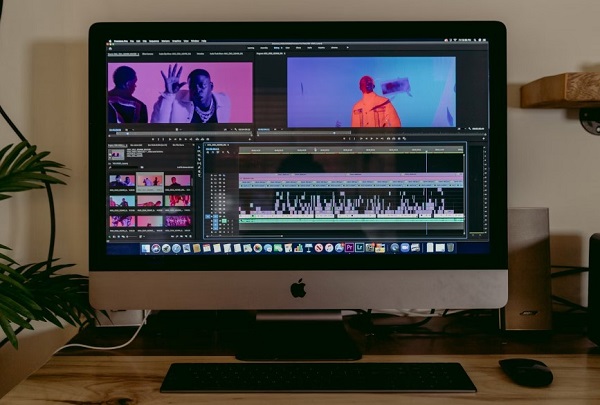Video production is a complex process. Without a comprehensive plan and thorough review, the final product may not align with the initial vision or meet the desired quality standards.
In every video production, efficient review processes are crucial to maintaining project timelines and ensuring high-quality outcomes. For remote teams, the challenge is even greater as they navigate the complexities of distance and, perhaps, time zones.
We’ve compiled seven actionable strategies to help remote teams streamline their video review processes. We’ll delve into the use of collaborative software, setting clear guidelines, and some more strategies to enhance efficiency and collaboration!
Utilize Collaborative Software
Collaborative software is essential for remote video production teams. It enables seamless communication, feedback, and collaboration across different locations and time zones.
These tools provide a centralized platform where team members can upload videos, leave comments, and suggest edits, all in one place. This centralization helps avoid inefficiencies from using multiple platforms or methods for video review.
Collaborative software also allows real-time collaboration. Many team members can view and comment on the same video simultaneously, which is particularly beneficial for remote teams.
Among many recommendations, Frame.io is one of the well-known project management tools for seamless video review processes. You can leave time-stamped comments directly on the video timeline or pinpoint areas needing changes.
Set Clear Guidelines and Expectations
Clear guidelines and expectations from the get-go ensure everyone in the video production process is on the same page. Your guidelines should outline the roles and responsibilities of each team member.
You may also include the criteria for reviewing and approving content and the deadlines for each stage of the review process. Having well-defined roles helps prevent overlap and confusion.
For example, when producing an explainer video for Lead Learn Leap, one person might be responsible for the initial video edit, while another might review the content for accuracy. Clear review criteria ensure that everyone evaluates the video based on the same standards to maintain quality and consistency.
Centralize Communication
Throughout video production, you must communicate with editors, managers, stakeholders, or even clients. To make communication effective, a centralized platform is necessary for receiving project-related discussions, feedback, and updates.
Centralized communication platforms allow your team to easily track progress, access the latest file versions, and quickly find any relevant discussions. If you rely on emails, there is a risk of information getting lost in email threads.
Typically, the collaborative software you use already includes this feature. However, in case you can’t find this feature, consider using an additional project management tool like Asana or Airtable.
Schedule Regular Check-ins
Why is regular check-in important? It helps you keep the team aligned and make sure the project stays on track. These meetings give an opportunity to review progress, clarify any doubts, and adjust plans as necessary.

You can schedule different types of check-ins depending on the team’s needs and the project’s stage. For instance:
- Daily stand-ups are short meetings where each member shares their progress and challenges.
- Weekly reviews are more in-depth and focus on reviewing the overall progress of the project and planning the next steps.
- Ad-hoc meetings can be scheduled as needed to address urgent issues or changes in the project scope.
Schedule regular check-ins that are appropriate to your team. Also, ask for their agreement to conduct those meetings.
Implement Asynchronous Reviews
Asynchronous reviews allow team members to provide feedback on video content at different times rather than needing to be online simultaneously. This flexibility is beneficial for remote teams spread across various time zones.
Everyone involved doesn’t have to be constantly available, so they can give more thoughtful and detailed feedback. Your team can maintain a steady workflow and avoid delays caused by scheduling conflicts.
Moreover, feedback can be collected and consolidated in one place to ensure all comments and suggestions are considered before the next round of edits.
Use Annotation Tools
Annotation tools allow team members to leave precise, visual feedback directly on the video. These tools enable reviewers to highlight specific areas of the video and draw shapes or lines to indicate changes.
This visual feedback helps avoid misunderstandings and provides clear, actionable directions for the editing team. Annotations also make it easier for your team to understand what needs to be adjusted.
Monitor Progress and Adjust as Needed
Monitoring progress involves regularly tracking the project status and ensuring it stays on schedule and meets quality standards. This process includes setting milestones, checking task completion, and identifying any bottlenecks.
Meanwhile, adjusting as needed means being flexible and responsive to changes or challenges. You may reallocate tasks, extend deadlines, or implement new tools. These strategies help you deliver high-quality results on time.
Conclusion
The above strategies can help overcome the unique challenges faced by remote teams and foster better collaboration. You can produce outstanding projects consistently, regardless of geographical distances and time zone differences.
Ultimately, a well-optimized video review process empowers your team to focus on innovations and creativity rather than getting bogged down by logistical hurdles. With the right tools and strategies, remote video production can be effective and efficient.
About the Author

Andre Oentoro is the founder of Breadnbeyond, an award-winning animation video company. He helps businesses increase conversion rates, close more sales, and get positive ROI from explainer videos (in that order).




